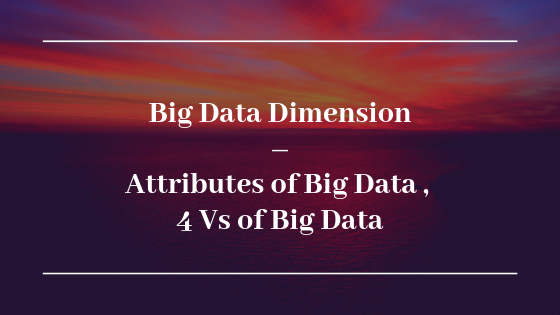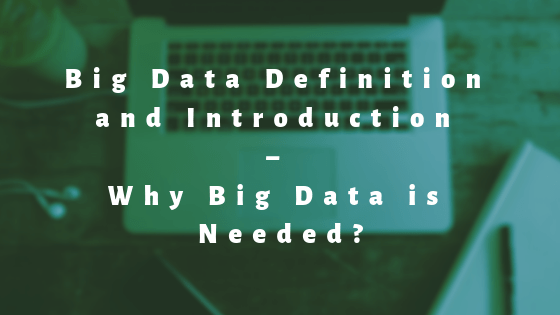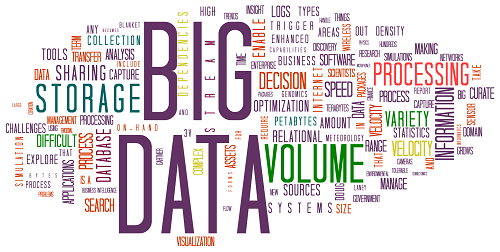Big data is important because it enables companies to gather, store, manage, and manipulate vast amounts data at the right speed and at the right time to gain the right insights. To achieve this, big data dimension must be considered in any big data solution.
A big data solution must address the below mentioned four V’s, also known as attributes of big data.
In addition to Volume, the velocity of data is used to define the speed with which different types of data gets generated every second.
Variety refers to structured, unstructured and semi-structured nature of data such as web logs, sensor data, radio frequency ID (RFID), meter data, stock ticker data, tweets, images, and video files on the Internet.
Veracity plays an important role in addressing whether data can be trusted or not when decisions need to be taken.
Big Data Dimension
[image_frame url=”http://rcvacademy.com/wp-content/uploads/2016/11/attributes-of-big-data.png” border_style=”boxed-frame-hover” action=”open-lightbox”]
Variety
The variety of data is the first big data dimension.
Variety refers to collecting data from various sources (human and machine) and include data from sources like, social media, credit card usage, website visits, retail shops, hospitals, mobiles, sensors, log files, security cameras, etc.
As data is captured from the variety of sources and multiple data types like structured, semi-structured and unstructured from internal systems and external systems so it becomes very important to integrate these multiple data types.
Volume
Volume is the second dimension of big data, volume refers to the quantity of data.
With internet era the data is generated by machines, human interaction on social sites and other platforms, so the volume of data generated every day is humongous.
IBM estimates that 2.5 quintillion bytes of data is created each day.
Velocity
The third big data dimension deals with the speed of data which flows from various sources like social media and internal business processes.
In the internet era the flow of data from social media is massive and continuous so handling the velocity of such amount of data and coming up with meaningful information helps the organization in making key business decisions.
Veracity
Veracity is the fourth attribute which refers to the abnormality of data. How much of the data can be trusted as it is when decisions have to be taken.
This dimension focuses on how to integrate data from different sources into a consistently high-quality data which can be helpful in making the meaningful decision for a business.


